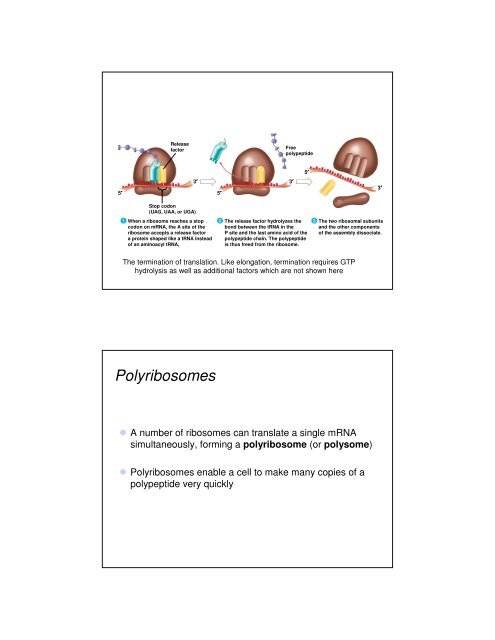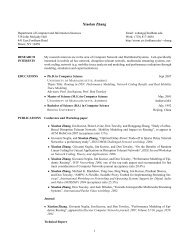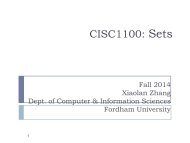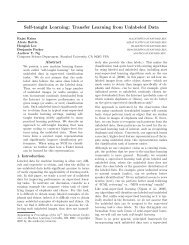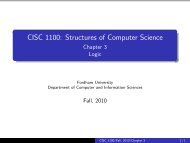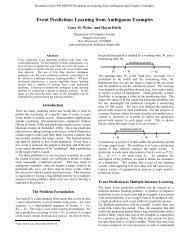Basic Principles of Transcription and Translation - Computer ...
Basic Principles of Transcription and Translation - Computer ...
Basic Principles of Transcription and Translation - Computer ...
You also want an ePaper? Increase the reach of your titles
YUMPU automatically turns print PDFs into web optimized ePapers that Google loves.
Release<br />
factor<br />
Free<br />
polypeptide<br />
5′<br />
5′<br />
3′<br />
5′<br />
3′<br />
3′<br />
Stop codon<br />
(UAG, UAA, or UGA)<br />
When a ribosome reaches a stop<br />
codon on mRNA, the A site <strong>of</strong> the<br />
ribosome accepts a release factor<br />
a protein shaped like a tRNA instead<br />
<strong>of</strong> an aminoacyl tRNA,<br />
The release factor hydrolyzes the<br />
bond between the tRNA in the<br />
P site <strong>and</strong> the last amino acid <strong>of</strong> the<br />
polypeptide chain. The polypeptide<br />
is thus freed from the ribosome.<br />
The two ribosomal subunits<br />
<strong>and</strong> the other components<br />
<strong>of</strong> the assembly dissociate.<br />
The termination <strong>of</strong> translation. Like elongation, termination requires GTP<br />
hydrolysis as well as additional factors which are not shown here<br />
Polyribosomes<br />
A number <strong>of</strong> ribosomes can translate a single mRNA<br />
simultaneously, forming a polyribosome (or polysome)<br />
Polyribosomes enable a cell to make many copies <strong>of</strong> a<br />
polypeptide very quickly


